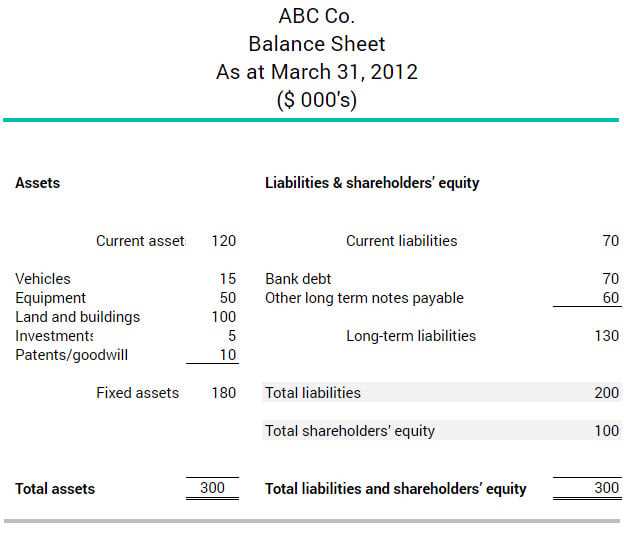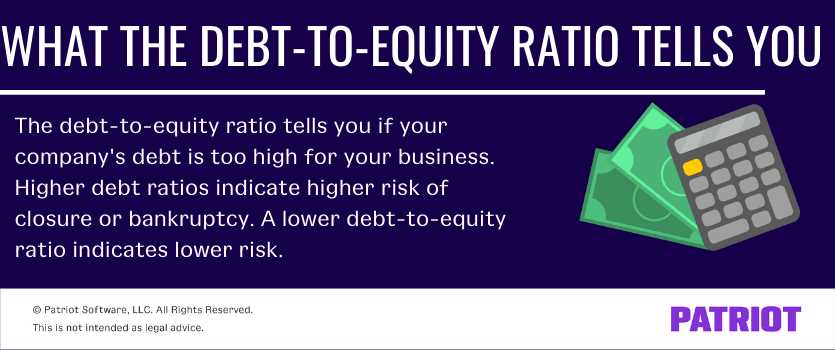What is Debt to Equity Ratio?

The debt to equity ratio is a financial ratio that is used to measure the proportion of a company’s financing that comes from debt compared to equity. It is a measure of the company’s financial leverage and indicates the level of risk associated with the company’s capital structure.
The debt to equity ratio is calculated by dividing the total debt of a company by its total equity. Debt includes both short-term and long-term liabilities, such as loans, bonds, and other forms of debt financing. Equity represents the ownership interest in the company and includes common stock, preferred stock, and retained earnings.
A high debt to equity ratio indicates that a company has a higher proportion of debt financing compared to equity financing. This means that the company relies heavily on borrowed funds to finance its operations and growth. A high debt to equity ratio can be a sign of financial risk, as it indicates that the company has a higher level of debt that needs to be serviced and repaid.
On the other hand, a low debt to equity ratio indicates that a company has a higher proportion of equity financing compared to debt financing. This means that the company relies more on its own funds and has a lower level of financial risk. A low debt to equity ratio can be a positive sign, as it indicates that the company has a strong financial position and is less dependent on external financing.
The debt to equity ratio is an important metric for investors, creditors, and analysts, as it provides insights into a company’s financial health and risk profile. It is often used to assess the company’s ability to meet its debt obligations and to evaluate its overall financial stability.
It is important to note that the debt to equity ratio should be interpreted in the context of the industry and the company’s specific circumstances. Different industries have different capital structures and risk profiles, so it is important to compare the ratio to industry benchmarks and to consider other financial ratios and factors when analyzing a company’s financial position.
How to Calculate Debt to Equity Ratio?
The debt to equity ratio is a financial metric that measures the proportion of a company’s total debt to its shareholders’ equity. It indicates the level of financial leverage used by a company to finance its operations and growth. The debt to equity ratio is calculated by dividing the total debt of a company by its shareholders’ equity.
Step 1: Determine Total Debt

The first step in calculating the debt to equity ratio is to determine the total debt of the company. This includes both short-term and long-term debt. Short-term debt typically includes accounts payable, accrued expenses, and short-term loans. Long-term debt includes bonds, mortgages, and long-term loans.
Step 2: Determine Shareholders’ Equity
The next step is to determine the shareholders’ equity of the company. Shareholders’ equity represents the residual interest in the assets of the company after deducting its liabilities. It is calculated by subtracting the total liabilities from the total assets. Shareholders’ equity includes common stock, preferred stock, retained earnings, and additional paid-in capital.
Step 3: Calculate the Debt to Equity Ratio
Once the total debt and shareholders’ equity have been determined, the debt to equity ratio can be calculated by dividing the total debt by the shareholders’ equity. The formula for the debt to equity ratio is:
Debt to Equity Ratio = Total Debt / Shareholders’ Equity
For example, if a company has total debt of $1,000,000 and shareholders’ equity of $500,000, the debt to equity ratio would be:
Debt to Equity Ratio = $1,000,000 / $500,000 = 2
This means that for every dollar of shareholders’ equity, the company has $2 of debt.
Interpreting the Debt to Equity Ratio
The debt to equity ratio is used to assess the financial risk of a company. A high debt to equity ratio indicates that a company has a higher proportion of debt relative to its equity, which can be a sign of financial instability. On the other hand, a low debt to equity ratio indicates that a company has a lower proportion of debt relative to its equity, which can be a sign of financial strength.
Interpreting Debt to Equity Ratio
The debt to equity ratio is a financial ratio that provides insight into a company’s financial leverage. It measures the proportion of debt to equity, indicating the extent to which a company is relying on debt financing compared to equity financing.
A high debt to equity ratio suggests that a company has a significant amount of debt relative to its equity. This can indicate that the company may be at a higher risk of financial distress, as it has a larger debt burden to repay. It may also suggest that the company is highly leveraged, which can amplify both positive and negative financial outcomes.
On the other hand, a low debt to equity ratio indicates that a company has a smaller amount of debt compared to its equity. This suggests that the company has a more conservative financial structure and may be less vulnerable to financial difficulties. It can also indicate that the company relies more on equity financing, which can provide stability and flexibility in the long term.
It is important to note that the interpretation of the debt to equity ratio can vary depending on the industry and the company’s specific circumstances. For example, industries such as utilities or telecommunications may typically have higher debt to equity ratios due to the capital-intensive nature of their operations.
Comparing the debt to equity ratio of a company to its industry peers or competitors can provide additional insights. If a company has a significantly higher or lower ratio compared to its peers, it may indicate a unique financial position or strategy.
Overall, the debt to equity ratio is a valuable tool for investors, creditors, and analysts to assess a company’s financial health and risk profile. It helps to evaluate the company’s capital structure and understand its reliance on debt financing, providing important information for decision-making and risk management.

Emily Bibb simplifies finance through bestselling books and articles, bridging complex concepts for everyday understanding. Engaging audiences via social media, she shares insights for financial success. Active in seminars and philanthropy, Bibb aims to create a more financially informed society, driven by her passion for empowering others.
